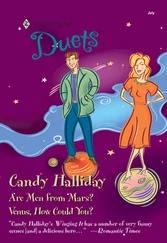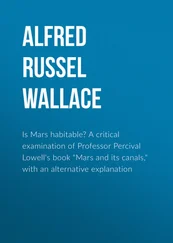There was another enthusiastic reader on the ward, little Mary Finch. She was the single most straightforward person I have ever met. She came from Rutland, the smallest county in Great Britain, which seemed exactly right somehow. That this small and perfect person should come from a county not much bigger than a pocket handkerchief. Of course Still’s Disease distorted her body, and steroids added a layer of blurring, but her character remained intact and in proportion.
Mary and I shared a passion for the Famous Five stories of Enid Blyton. Better than that, we had the same preferences in terms of the characters. Julian our top favourite, then Dick. Mary introduced me to the Pookie books — the adventures of a little winged rabbit. Pookie in Search of a Home. Pookie Sets the World Right. Pookie and the Gipsies . She had the lot. We never ran out of things to talk about. Having Mary on the ward took the solitariness out of reading. I was always saying to myself, as I read, ‘Wait till Mary hears about this!’
We on Wards One and Two had nothing in common except the diagnosis we shared, so we negotiated our status by way of self-portraits with only a couple of characteristics, simplified identities. Wendy, for instance, characterised herself as a plain-speaking Northerner who had an older brother who would thump us so that we stayed thumped. It was hard to imagine him being able to add anything to Wendy’s reign of terror. This brother who was the ace up her sleeve could hardly be more daunting than the aces she played every day.
It was some time before I realised that not all of us on those wards were in fact ill in the same way. I had noticed how few boys there were, and I hadn’t succeeded in identifying any kindred spirits. There was one boy who seemed even less able to move than I did, as if he had been condemned in his turn to the bed rest I had escaped, keeping the horizontal population of England constant. His condition, though, seemed to be extreme weakness, rather than locked joints. To the extent that he could move at all he could move every part of himself. I would have been tempted to make overtures, though I would have needed help from the staff to approach him, if he wasn’t always whispering the same thing to himself. I couldn’t see him properly, but I could hear him whispering, ‘Lamb … lamb … lamb.’
It was Mary who told me what was really going on. He had arranged an army of toy soldiers on the bed, and he spent his time feebly knocking them over with the flick of a feeble finger, one after another, whispering the whole time, ‘Blam … blam … blam.’ I took against him over that, and not just because of my dislike of war games. I had the feeling that he was punishing his men for their inability to move, the moulded joints they couldn’t help any more than I could help mine. Inevitably, Mary was more sympathetic. ‘Poor boy,’ she said. ‘He’s really very ill.’
Wendy was reliably more Gothic: ‘He’s done for. He’s a goner. He’s in the Death Bed. No one who sleeps in that bed lasts for long.’
Mixed population
She was doing what she could to make sense of a distinctly perverse arrangement. Professor Bywaters was an acknowledged expert on Still’s Disease, but he had another interest also, a sideline. It seems absurd now to imagine that sick children could be put together simply on the basis of a doctor’s twin clinical specialities, but that was how it was on Wards One and Two. Eric Bywaters was a big name, his wishes had force.
His other interest was childhood leukæmia. We were a mixed population for no other reason than that we had equal claim on his attention. The two classes of patient were nursed together, with no one actually explaining to them that they belonged to two quite different categories. The leukæmia children were going to die. The Still’s Disease children weren’t. They were likely to be in pain, and they were going to be deformed to one degree or another. You could go so far as to say that life had turned its face away from them (certainly that must have been how it seemed to many of their parents) but death wasn’t staring them down.
So when Wendy had said on that first day, ‘He’s not pale — he’s very twisty,’ to the cannibal girl called Ivy, she was for once being scientific — in a rudimentary way — rather than merely baleful. Deep down she didn’t buy the Death Bed notion, though it was a useful idea to frighten others with. She had understood from the first that some children were going to die, Death Bed or no Death Bed. She was establishing that I had Still’s Disease and not the other thing, whatever it was. Information which could be obtained no other way than by going and taking a look. Sarah had been curious too, which was why she had joined the little party. Secrecy was the prevailing condition in that hospital. We were all in the dark. Why should patients be told about such things as the composition of the wards they were on? Patients who were children least of all. It was none of our business. For once Wendy Keach was ranged on the side of knowledge, against the ignorance in which we were left by the hospital. She was only assigning me to the correct tribe.
Professor Bywaters was a good man and a good doctor, but in those days being an expert in Still’s Disease didn’t actually mean you knew very much. The last I heard, he was still alive and alert. The mystery of Still’s Disease is still alive too. There’s a theory that it’s an auto-immune condition, like the rheumatic fever I was originally supposed to have, but the jury is still out on that. Childhood leukæmia has given up a much larger proportion of its secrets. In the 1950s, when to say ‘cancer’ seemed no different from saying ‘death’, leukæmia was even more terrifying a diagnosis than it is now. It had a starkness.
Not all of us with Still’s had quite the same symptoms. Ivy Horrocks was blind, although she was in the middle of a long series of operations which might do something to restore her sight. Her problem must have been acute iritis, caused by the disease from which we all suffered, with antibodies in her case attacking the eyes. Wendy told us Ivy was a witch who would put the evil eye on us, but that may just have been politeness on her part, wanting to establish her friend on an equal footing of malevolence.
I was fascinated by Ivy’s books, of which she was very proud. They were made up of raised dots in enchanting patterns. In a genuinely rather witchy way, Ivy’s eyes seemed to have migrated down her arms to her fingertips. Reading for her was now something that took place outside her head.
Sarah Morrison had senior status in the group, not because she was the oldest but because she had contracted the illness the youngest. She had been eighteen months old. She had been born in India, which meant she could eat the spicy food called curry without dying. She collected dolls. They were all from different countries and some of them had strange foreign names.
A girl called Geraldine, who was given to silent sobbing, could play chess, but as there was no one else who could, and no one who wanted to learn, her accomplishment didn’t raise her status noticeably or even help her to pass the time.
Wally Snorts the Posh
As for me, I tried to sell myself as the son of an Air Force pilot war hero, but that made no impression, whether because an audience of girls wasn’t susceptible to that brand of glamour, or because in our strange way we were a meritocracy, one of the few enclaves in the country at that time where it didn’t matter what your father did as long as you said ‘toilet’ and not ‘lavatory’. I was branded as Wally Snorts the Posh in Wendy’s eyes, and I couldn’t do anything about that, but I did manage to use Charlie to broker an enlarged identity.
Читать дальше












